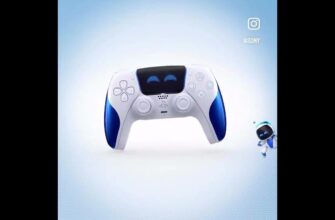A significant chapter in the annals of portable gaming history is officially closing. Nintendo has announced the definitive cessation of repair services for its entire 3DS family of handheld consoles, citing an unavoidable scarcity of necessary parts. This marks the unequivocal end of hardware support for a device that, for many, defined a generation of on-the-go entertainment.
The Inevitable Farewell: A Matter of Parts
The final curtain call comes for the New Nintendo 2DS XL, with repair services officially ending on September 4, 2025. This follows earlier discontinuation of support for other models in the series, including the original 3DS (August 2024) and the standard 2DS. Nintendo’s statement is stark and to the point: “As we have run out of parts needed for repairs, we have discontinued repair services for the New Nintendo 2DS XL… Repairs for all other Nintendo 3DS series systems have also been discontinued.” It`s a pragmatic decision, but one laden with nostalgia for millions of players worldwide.
For those who have cherished their device through countless adventures across Hyrule, Pokémon regions, or the meticulous gardening of Animal Crossing, this announcement serves as a sobering reminder of a console`s finite lifespan. Once a console`s production lines cease, the availability of spare parts naturally dwindles, making continued repair operations economically and logistically unfeasible. It`s the technical equivalent of nature taking its course.
A Legacy in Three Dimensions (and then Two)
Launched with much fanfare, the Nintendo 3DS initially captivated the market with its headline feature: a glasses-free stereoscopic 3D display. It was a bold, if somewhat experimental, gamble on a cutting-edge visual experience. For a time, exploring digital worlds in apparent depth felt genuinely futuristic. However, as is often the case with groundbreaking technology, practical considerations soon led to evolution.
Nintendo, ever the innovator, adapted. Later iterations, most notably the 2DS and New 2DS XL, wisely shed the 3D gimmick entirely. This move allowed for more accessible price points and a design ethos geared towards a broader, often younger, audience. Ironically, the very feature that gave the console its name became optional, then absent, proving that core gameplay and a robust library ultimately matter more than any singular technological marvel. The 3DS family ultimately sold an impressive 75.9 million units worldwide, a testament to its enduring appeal despite the evolving hardware philosophy.
While the 3DS eShop famously closed its digital doors in 2023, effectively ending digital game purchases and many online functionalities, the console`s physical cartridge library remains a vibrant treasure trove. For collectors and dedicated fans, these physical copies offer a lasting connection to a rich catalog of games that might otherwise be lost to time. It`s a comforting thought in an increasingly digital world that some experiences are still tangibly, physically, preserved.
The Unending Cycle of Console Generations
The cessation of repair support for the 3DS is not merely a technical footnote; it symbolizes the final rites for a console generation. Every console, no matter how beloved, eventually reaches this stage. From the Atari to the PlayStation 2, and now the 3DS, the cycle of innovation dictates that new hardware emerges, and older systems gracefully (or sometimes abruptly) recede into the realm of cherished memory and collector`s items.
This transition prompts a broader reflection on Nintendo’s trajectory. As the 3DS era draws to a close, the company continues its remarkable journey with the incredibly successful Nintendo Switch, a console that masterfully blended home and portable gaming. While the future holds new advancements and, inevitably, new hardware iterations, the foundational principles of engaging gameplay and accessible innovation remain Nintendo`s guiding stars.
What Now for 3DS Owners?
For current 3DS owners, this announcement underscores the importance of preservation. Working consoles become increasingly valuable. Communities dedicated to console modding and repair may step into the void left by official support, offering unofficial solutions for those willing to venture beyond manufacturer warranties. For most, however, it means treating their aging handhelds with extra care, knowing that official avenues for repair are no longer an option.
The Nintendo 3DS might no longer receive official factory support, but its legacy as a unique, innovative, and deeply beloved handheld console is secure. It carved its own niche, offering a glimpse into a 3D gaming future, and provided countless hours of joy. As the digital age marches forward, we bid a fond farewell to the little device that brought stereoscopic wonder to our hands, cementing its place in the pantheon of gaming greats.







